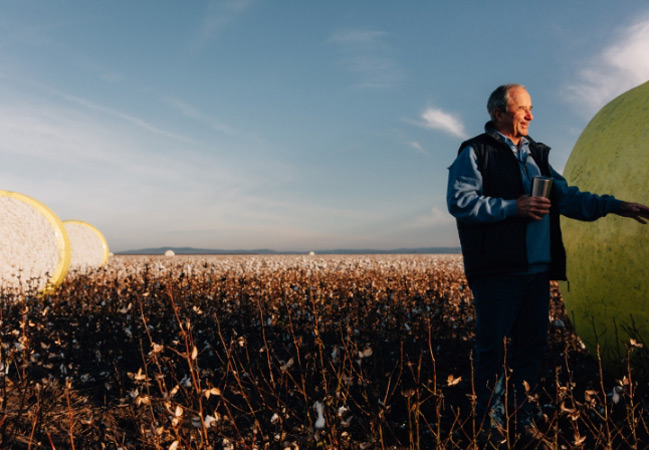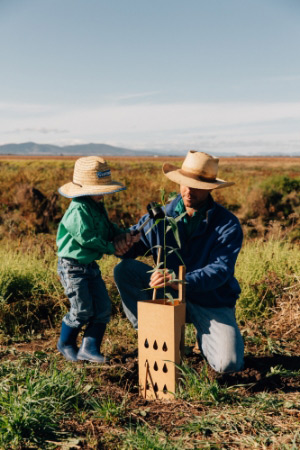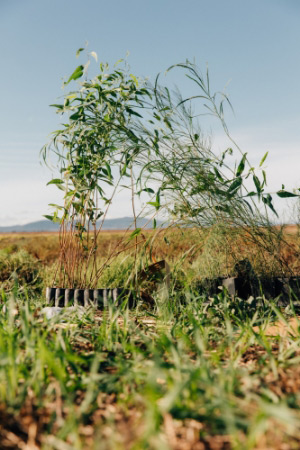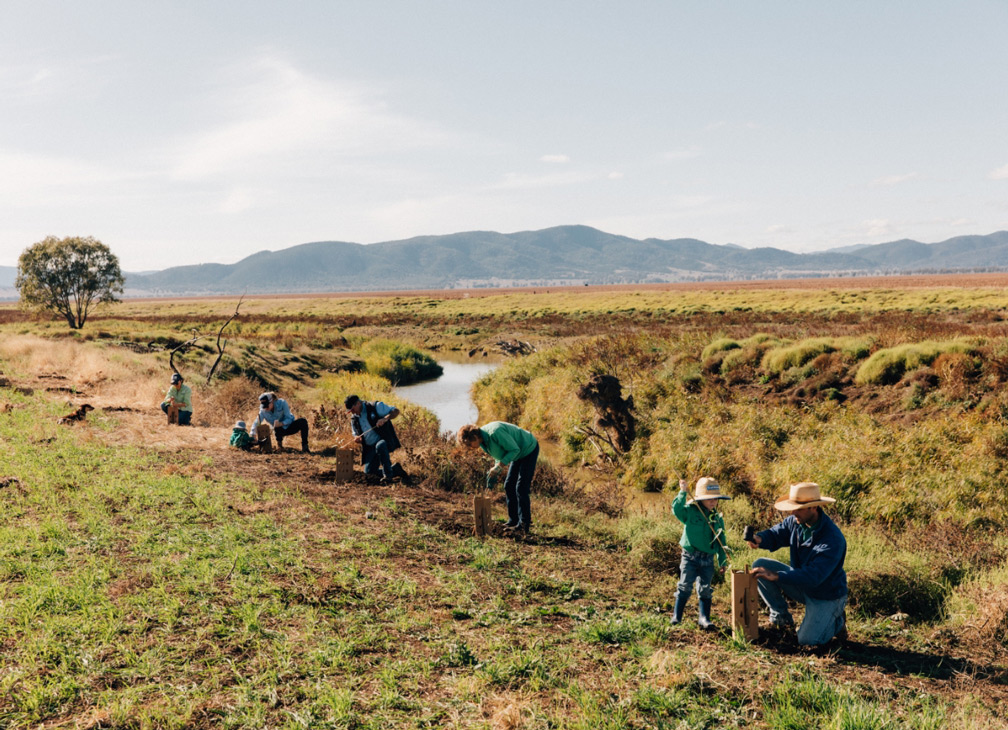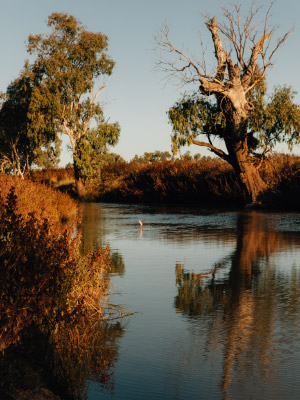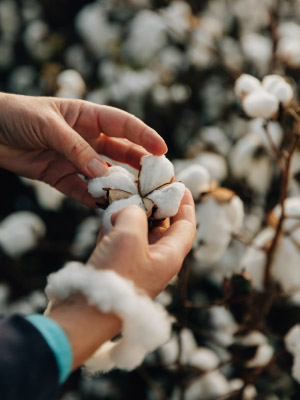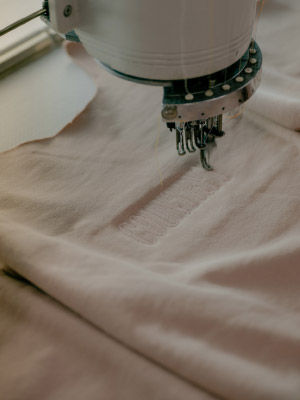The Biodiversity Project: Meet the Hamparsums and the Pursehouses
Since 2020, Country Road has proudly partnered with Landcare Australia to support the restoration of Australian farmlands, with a focus on increasing biodiversity in cotton growing regions.
Since launching the partnership, we've worked with four farming families to plant over 9,000 seedlings and rehabilitate over 47.5 hectares of native vegetation.
Here, we meet two of the families in the Namoi Valley, South Wales, whose planting activities are supporting the revegetation of the Mooki River.
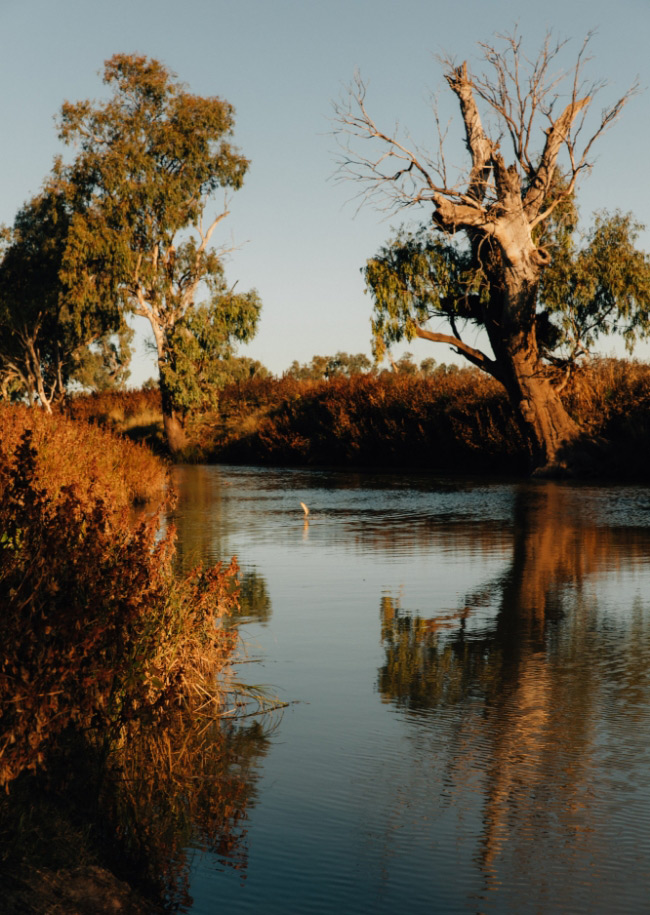
Biodiversity describes all living things that can be found on earth, including all plants, animals, insects and more. Biodiversity plays an incredibly vital ecological, cultural and economic role, which needs our support and protection, to sustain life as we know it.—Dr Shane Norrish, CEO, Landcare Australia
The Hamparsums
Brother/sister farming duo John and Juanita Hamparsum are second generation cotton farmers continuing the work of their father, who was attracted to the rich, black soils of the Liverpool Plains and bought the property in the 1960s.
As part of The Biodiversity Project, they are revegetating 16 hectares of Mooki River area south of Gunnedah to create wildlife corridors, and are also developing a fish passage in the river, enabling a variety of native fauna to traverse their habitat safely and more easily.
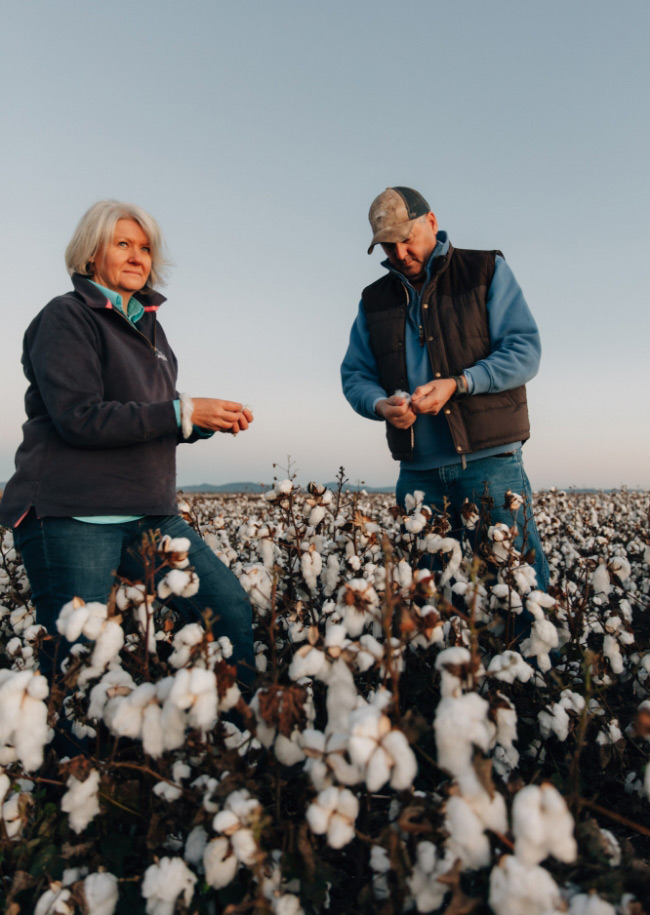
Creating corridors to connect wildlife habitats
“The Biodiversity Project on the farm is focusing on providing a diversity of species, both flora and fauna, to create an ecosystem that’s actually thriving. Sometimes, especially now, we’ve been through some really difficult climatic changes. In the recent drought, we had three years of unparalleled dry. As a result of that, koala numbers have absolutely dwindled. So what we’re trying to do with this program is to rejuvenate the area and our biodiversity, predominantly on the flora side so that we can attract the fauna back to the area.” —John Hamparsum
“One of the things about a natural environment and vegetation is you have clusters of habitat and that’s where the birds, insects and natural fauna thrive. When those areas become disconnected and the animals are running out of food, they need to traverse the landscape to the next habitat. If there’s no connection or cover for them to be able to get from A to B they’re actually very vulnerable, not only to predators—whether it’s wild cats or feral animals or even foxes—it’s also that they just don’t have any cover to hide.
By providing a connecting corridor of vegetation, you’re not only enabling the habitat to extend itself, you’re also providing a freeway, so to speak, for the fauna to be able to move in a safe way.”
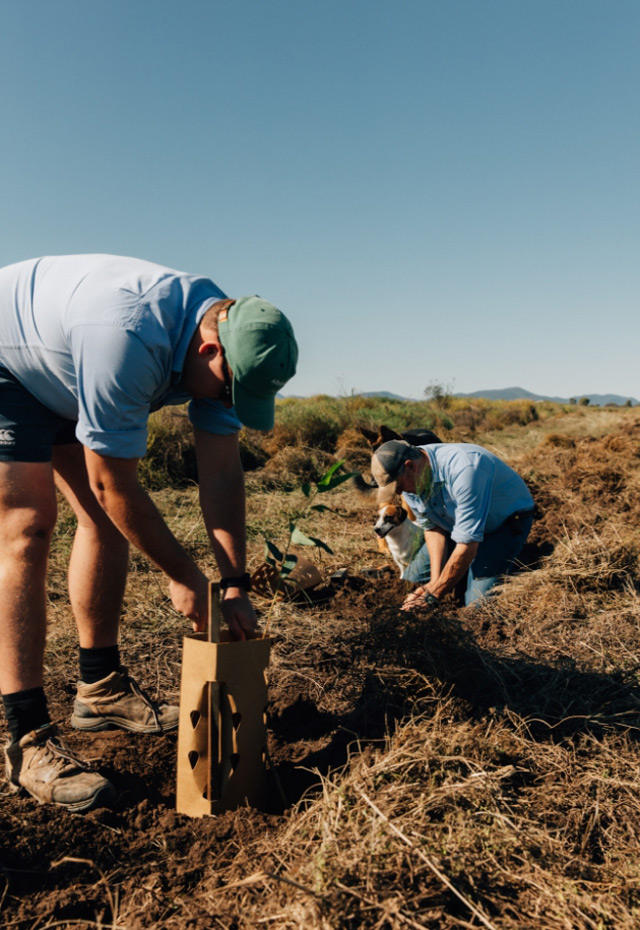
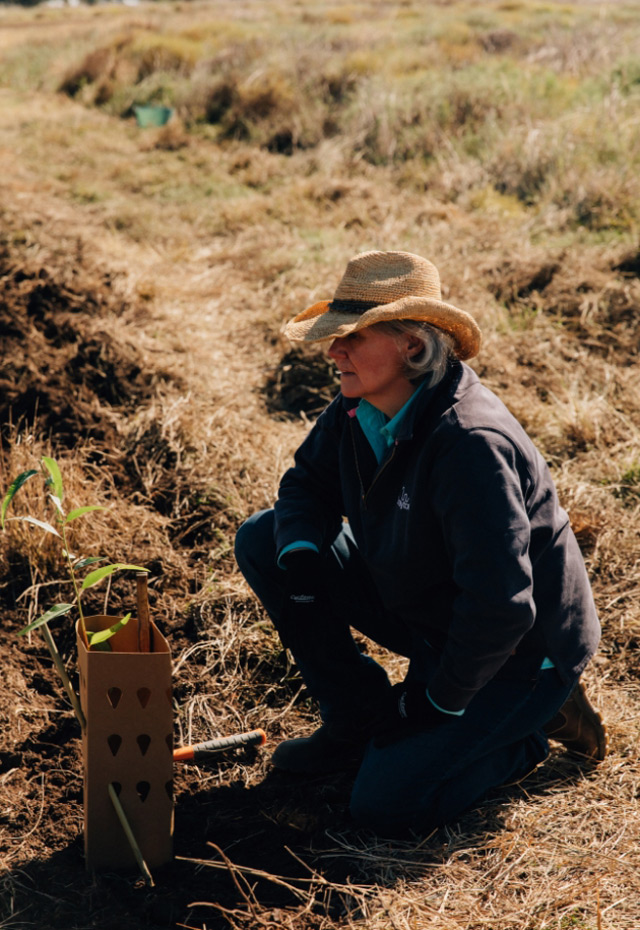
Improving river health to help native fish thrive
“I’m also a fisherman and I’ve always loved the river. I’ve seen a lot of changes happen in my lifetime alone. This river used to hold good levels of catfish, there was some cod that used to move through, but there was also quite a lot of yellow belly. But the introduction of carp has vastly changed what makes up the biodiversity in the river system and the biomass. Basically catfish have disappeared; we’re still getting a few cod come through and we get some yellow belly, but not very often. And I just looked at the river and I thought, what can I do to help?”
“Obviously shading the river is going to help—cooling the water down with trees—but also improving crossings on the river that are restricting the migration of cod. Cod come through in about August through to December to breed, and if there’s a high flow in the river, that’s when they want to move. If we’ve got some obstruction that’s holding them from going up to to breed into the headwaters, then I’d like to repair that or change it, so that’s the project we’re doing down here on the Mooki River.”
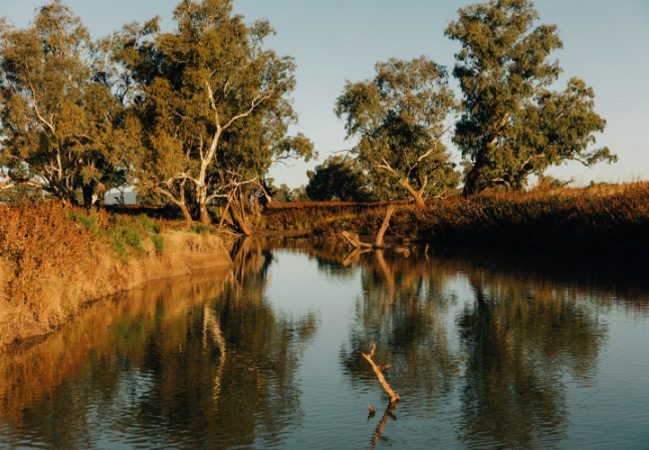
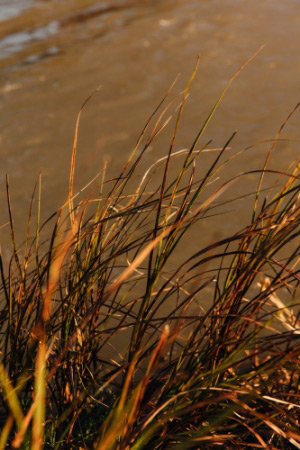

Being able to work with Landcare Australia and identify beneficial projects such as this tree planting project and the Biodiversity Project is great. It’s great to have that ability to draw on their expertise and work shoulder to shoulder with them to try and improve our farm and hopefully the community for the benefit of future generations to come.—John Hamparsum
The Pursehouses
Half an hour’s drive south of the Hamparsums is Breeza Station, a farm owned by Andrew and Cynthia Pursehouse and operated by the couple and their eldest son, James. Since 1986, they have been growing cotton, which is now their main crop, alongside corn and seasonal crops such as legumes and wheat. Working together with Landcare Australia, they are revegetating 15 hectares of habitat for koalas by planting 3,000 trees along the Mooki River. The Biodiversity Project on Breeza Station also includes planting botanical species to increase the presence of pollinators, small birds and microbats in the area.

Planting thousands of trees to help a threatened species
“I’ve got a great love for koalas, which were on the farm here when we first moved here, and over the time—about 30 years ago—we’ve planted quite a lot of tree lines which are now huge trees and the koalas are in them, which is great. The opportunity to put more trees in with Landcare Australia and Country Road is really great for the koalas.” —Cynthia Pursehouse
“When we first came here for many, many years I could go out and find five or six koalas. But about four years ago when there was a drought, the numbers diminished and I know a lot of the older koalas died because they couldn’t cope with the heat, and the drought didn’t help. We went for probably 12 months without seeing a koala, but in the past month we’ve seen two. We’re quite excited to think that hopefully they’re coming back again. For this project with Landcare Australia and Country Road, we are planting 3,000 trees along the banks of the Mooki River for the koalas.”
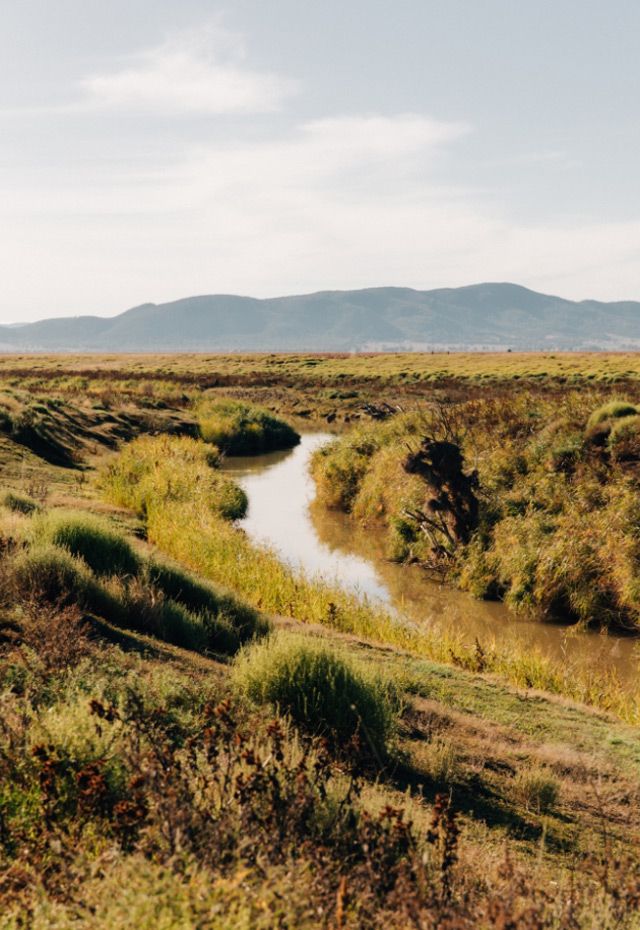

Caring for seedlings now to grow healthy trees in the future
“We’ve noticed that the koalas are moving further south. Mum and Dad originally planted trees around our house, but there isn’t enough vegetation between the house and the river or along the river banks for them to move safely. If we can connect the existing tree lines with the new areas we are planting in the Biodiversity Project, hopefully we can encourage and help that process of the koalas moving further south.” —James Pursehouse
“This project will help the koala corridor that was put in during the 90s between Breeza and Caroona. We’ve got some big tall trees that survived from that project, but a lot that didn’t survive. The appeal to us of Country Road and Landcare Australia being together is that it’s not just about planting the trees, it’s actually about looking after them in the future as well.” —Andrew Pursehouse
